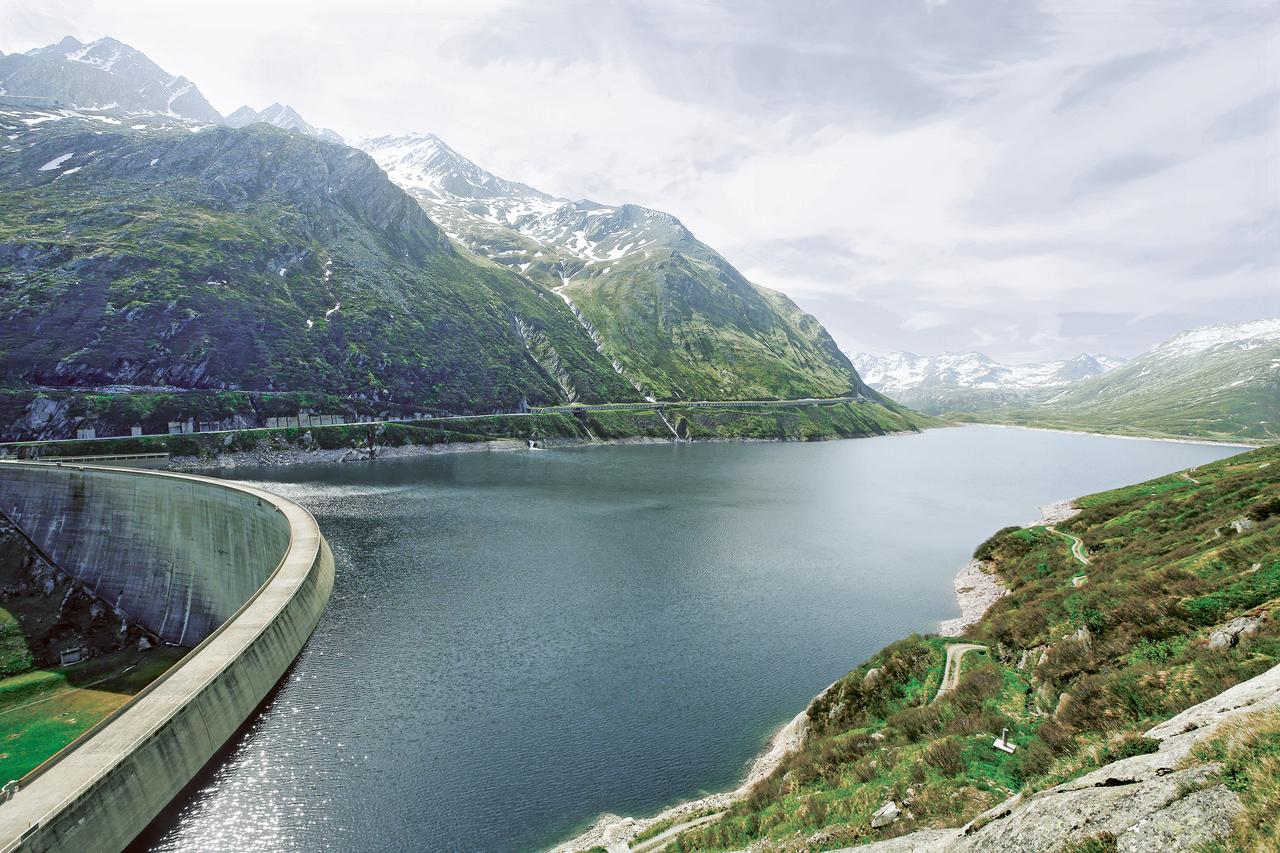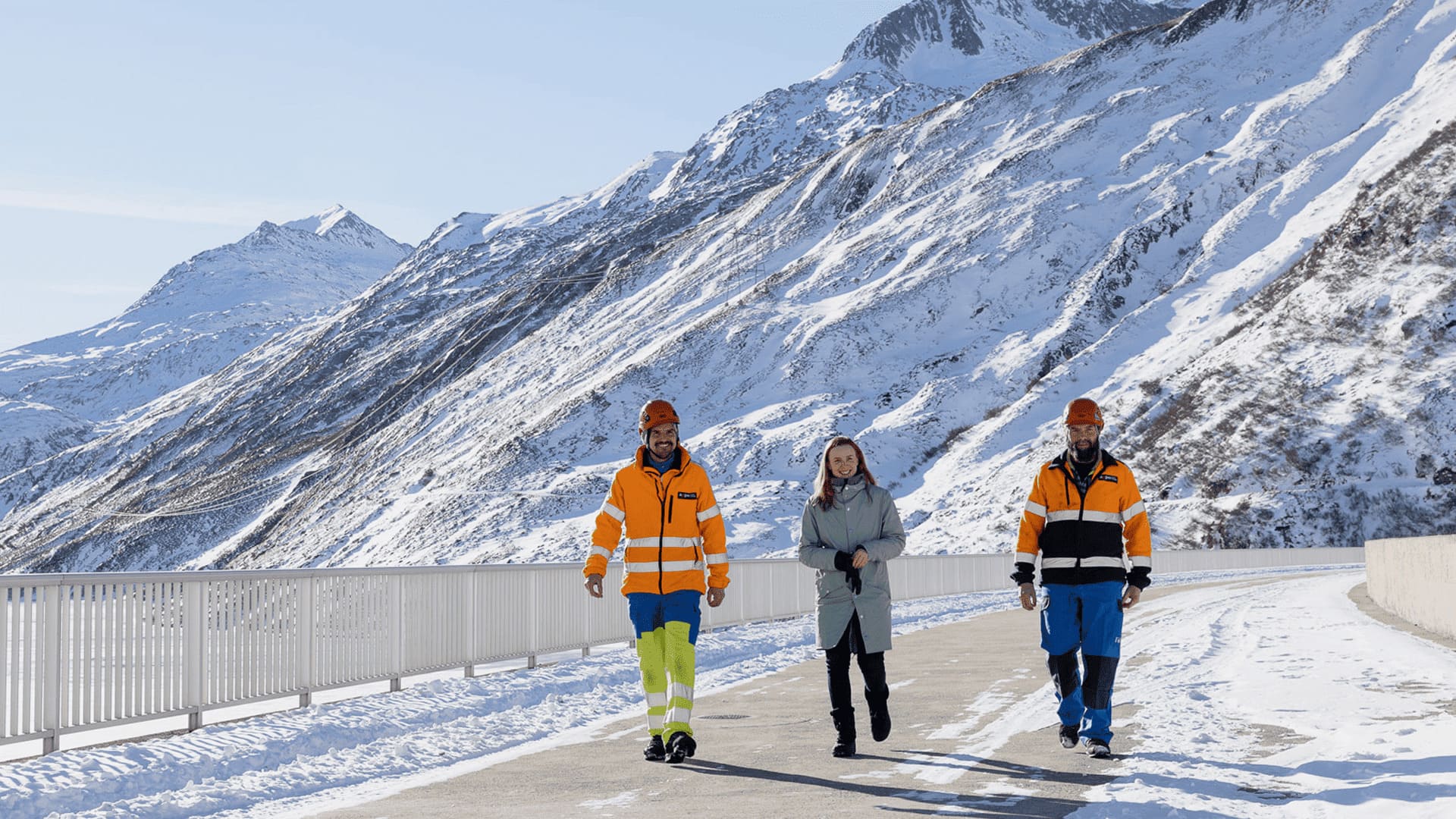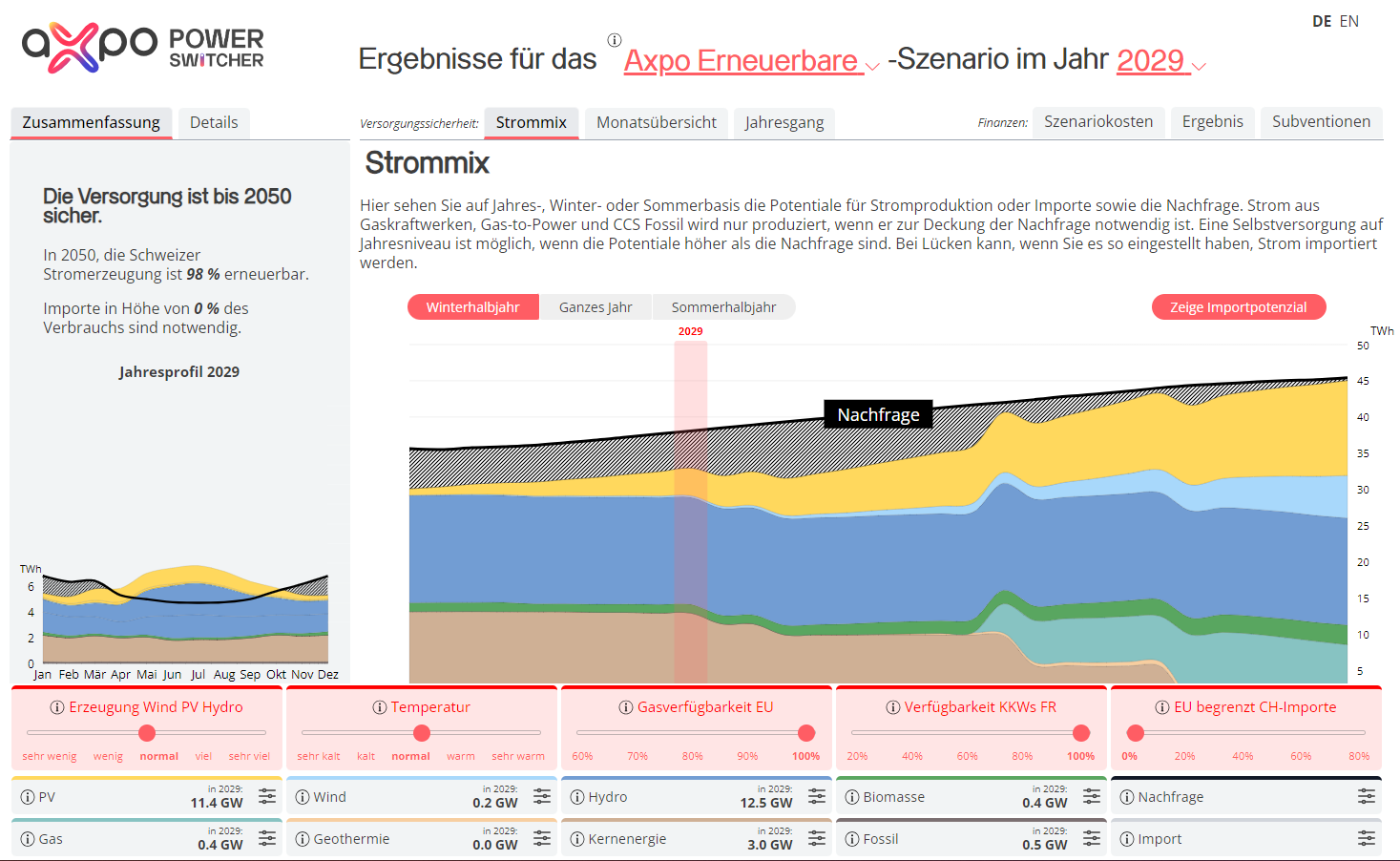14.03.2023 | Wägital power plant: a model student among pioneer plants
The first partner power plant in Switzerland
At the Wägital power plant, future electrical engineers experience how, even after a century, reliable systems of the highest quality are still key success factors. After all, hydropower remains the simplest, safest and cleanest way of generating electricity.
It’s a wet morning at the power plant base in Siebnen, Schwyz. Huddled together under umbrellas, eleven prospective electrical engineers from the University of Applied Sciences of Eastern Switzerland in Rapperswil (OST) stand with their jacket collars turned up. Fredi Züger rubs his hands together: ‘Rainy weather is hydropower weather.’ He beams at the group who are not yet quite awake. The retired former member of the Wägital power plant executive management has been a part-time lecturer at OST for twelve years.
Next to Fredi Züger, the students are welcomed by Christian Stockinger, who looks barely older than the visitors in his jeans and lace-up boots. ‘Fifteen years ago, I stood in this exact spot when I was allowed to visit this power plant as part of my studies at OST.’ He is now the operations manager. His mission of the day: gradual recommissioning of the power plant after the revision of the throttle valves in the Siebnen machine house. Together with his team, he will fill the drive system of the lower level with water and carry out various tests to resume electricity production in the Siebnen base during the course of the day.
Reliable use for almost 100 years
In 1921, what was then Nordostschweizerische Kraftwerke AG (NOK, now Axpo) and Elektrizitätswerk der Stadt Zürich (EWZ) founded AG Kraftwerk Wägital. They planned for no less than the highest gravity dam and the largest power plant in Europe. The wall is 111 metres tall, 66 metres of which are visible. At the time, this was absolutely gigantic. In addition, the flagship power plant was to not only produce electricity, but also pump the water up into Lake Wägital for storage and reuse. The construction period of four years (1922–1926) was extremely short by the standards of the time.
The inhabitants of Innerthal had to relocate from the lake. Those who didn’t want to move away were housed in the newly created village at the lake shore. The lake now holds a storage volume of 150 million cubic metres of water. To avoid landslides, only the amount of water between the storage levels of 880 and 900 m above sea level is managed. The power plant generates roughly 128 million kilowatt hours of electricity annually (including 100 million kWh from natural inflows). The catchment area of Lake Wägital stretches across 43 square kilometres. From a further 40 square kilometres, the water collects in the Rempen compensating reservoir and is pumped into Lake Wägital or used in the Siebnen base to generate electricity directly.
Partner contract celebrates its premiere
For the construction and operation of the Wägital power plant, NOK (Axpo) and EWZ drafted a ‘Partner Agreement’ for the first time – each with a 50 per cent stake – which is still used in many Swiss power plants. The partners pay for a proportion of the construction, operating and investment costs of the power plant and, in return, receive a corresponding proportion of the electricity produced.
The removal of the coveted goods from the Wägital power plant, however, presented a special challenge. EWZ feeds its electricity into the high-voltage grid (220 kilovolts), whereas Axpo feeds it into the national grid (50 kV/110 kV). ‘There are good reasons for the several different transformers here and, naturally, the individual cables leading from them,’ says Christian Stockinger, laughing as he points to the impressive transformer fleet behind the machine building.
He takes the students down to the basement of the Siebnen machine house, where head-high pressure lines direct the water to the four turbines (12 megawatts). There’s no gurgling – absolutely nothing can be heard. The system is not yet running. ‘However, even when the water is flowing, we still don’t hear the pressure lines but rather the driven turbines,’ explains Christian Stockinger.
The Wägital power plant has 15 employees. In addition to five mechanics, four employees manage the electrics and the control technology, which was fully replaced in 2003. Another five people are responsible for structural maintenance. External providers carry out any major overhauls. The throttle valves, for example, were overhauled in Piedimulera, Italy.
Plant for peak energy
The Wägital power plant works across two levels, has an installed capacity of 108 megawatts and produces pure peak energy. ‘Of the maximum 8,760 hours a year, the power plant is only in operation for around 1,200 hours, precisely when there is generally high demand for electrical energy or the price on the European electricity market is very high,’ says Christian Stockinger. The plant is controlled fully automatically from Sils im Domleschg, the Grisons, from where EWZ controls its storage power plants. Although the control room of the hydropower plant is as big as a classroom, the interior now consists of just a standing desk with a double screen. On the computer, Christian Stockinger now dives into the test results for the commissioning of the works water system and the Siebnen base, checking the water level and pressure.
Meanwhile, the knowledge-hungry group looks forward to a visit to the ‘Schräh’ dam wall, which separates the municipality of Innerthal from Vorderthal 11 kilometres up the valley. The Rempen base is halfway along the route. It is the destination of two approximately 250-metre-long pressure lines from the machine house, where the approximately 3.7-km-long pressure tunnel from Lake Wägital ends. Four 15 megawatt machine groups produce electricity here on the first level using water from the Schwyz Alpine foothills. Finally, four three-level centrifugal pumps transport the water collected in the Rempen compensating reservoir back up to Lake Wägital for reuse. Alternatively, it is turbined at the Siebnen base, then flows into the Wägital river and finally at Lachen, Schwyz, into Lake Zurich.
The dam at Lake Wägital is 156 metres long and also serves as a road. Below it are 236,600 cubic metres of concrete, elegantly clad with granite stones on the air side. ‘The wall may be as old as your great-grandparents, but gravity dams are still built in the same way today,’ says Fredi Züger with pride. Inside the dam, the visitors encounter a sticky moisture that fogs up their glasses and gives the capricious rainy day a run for its money. Fredi Züger points out the three weight sensors installed for monitoring, explains the joint measurements, the monitoring of the pore water pressure in the abutment and the analysis of the seepage and drainage water volumes. Fixed points are regularly monitored with geodetic measurements and precision levelling. ‘We collect the data continuously and seamlessly.’
Structural standards are set
The construction of the new bottom outlet from 1982 to 1984 was another masterpiece of engineering. Since the reservoir was not to be lowered below 880 m above sea level, the bottom outlet tunnel with a diameter of 2.5 m was milled through the wall from the air side. ‘For the final section and breakthrough, divers attached an assembly capsule from the reservoir side. It was an “air bell” that was placed on the wall with waterproofing.’ Fredi Züger’s anecdotes should convey one thing: durability arises when you combine sophisticated engineering technology, low-wear systems, pragmatic solutions and assembly techniques that have been refined over the years.
The Wägital power plant’s licence runs until the end of 2040. Renewal negotiations are approaching. Will the district of March opt for reversion or will it extend the licence as an all-round carefree package including water interest payments?
Unnoticed by the visitor group, in the control room, Christian Stockinger observes how the Schwyz water now gets to work. The turbines are set in motion and start the generators for electricity production. A very simple system ensures that – provided it is well maintained and looked after – the Wägital power plant can cover peak consumption in Zurich and the surrounding area safely and reliably for another hundred years, regardless of the weather.
Facts & Figures
Kraftwerk Wägital
- Reservoir: Lake Wägital (880–900 m above sea level)
- Gravity dam: 111 m (66 m visible)
- Damn crest: 156 m
- Lake volume: 150 million m3
- Rempen base: vertical axis Francis turbines 4 x 15 MW
- Vertical axis, three-level centrifugal pumps 4 x 4 MW
- Siebnen base: vertical axis Francis turbines 4 x 12 MW
- Median annual production: 128 million kWh (128 GWh)




.jpg)





